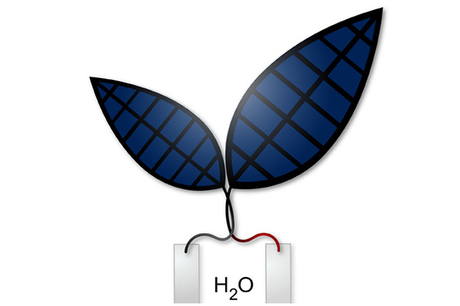Bionic leaf 2.0

A team from Harvard University has created a ‘bionic leaf’ that converts sunlight directly into a biomass fuel with 10 times the efficiency of natural systems. Using solar energy to split water molecules and bacteria that eats hydrogen to produce liquid fuel, the system converts sunlight to biomass with 10% efficiency, compared to the 1% efficiency found in nature.
“If you think about it, photosynthesis is amazing,” said Daniel Nocera, the Patterson Rockwood Professor of Energy at Harvard. “It takes sunlight, water and air ... and then look at a tree. That’s exactly what we did, but we do it significantly better, because we turn all that energy into a fuel.”
Nocera is calling this new system ‘bionic leaf 2.0’ as it is a vast improvement on his original ‘artificial leaf’, which used solar energy to make isopropanol but was hindered by its use of a nickel-molybdenum-zinc alloy catalyst that produced hydrogen but also created reactive oxygen species molecules. This required the system to be run at abnormally high voltages to prevent the destruction of the bacteria’s DNA.
Bionic leaf 2.0 uses a new cobalt-phosphorous alloy catalyst that can be run at a lower voltage, leading to a dramatic increase in efficiency. Co-author Pamela Silver, the Elliott T and Onie H Adams Professor of Biochemistry and Systems Biology at Harvard Medical School, said: “These catalysts are totally biologically compatible.”
She believes bionic leaf 2.0 will have a wide range of possible commercial applications: “In principle, we have a platform that can make any downstream carbon-based molecule. So this has the potential to be incredibly versatile.”
As well as isopropanol, bionic leaf 2.0 is also able to produce isobutanol, isopentanol and the bioplastic precursor PHB. For developments in this field, the team are indebted to the pioneering work of MIT Professor Anthony Sinskey.
Funding for this project was aided by the First 100 Watts program at Harvard, and the team are keen to share this technology with scientists in the developing world.
Published in Science, the paper’s lead authors include postdoctoral fellow Chong Liu and graduate student Brendan Colón. Funding was provided by Harvard University Climate Change Solutions Fund, the Wyss Institute for Biologically Inspired Engineering, the Office of Naval Research Multidisciplinary University Research Initiative Award and the Air Force Office of Scientific Research Grant.
Solar-powered reactor uses CO2 to make sustainable fuel
Researchers have developed a reactor that pulls carbon dioxide directly from the air and converts...
Scientists simulate the effects of an asteroid collision
How would our planet physically react to a future asteroid strike? Researchers simulated an...
2024 was warmest year on record, 1.55°C above pre-industrial level
The World Meteorological Organization says that 2024 was the warmest year on record, according to...




